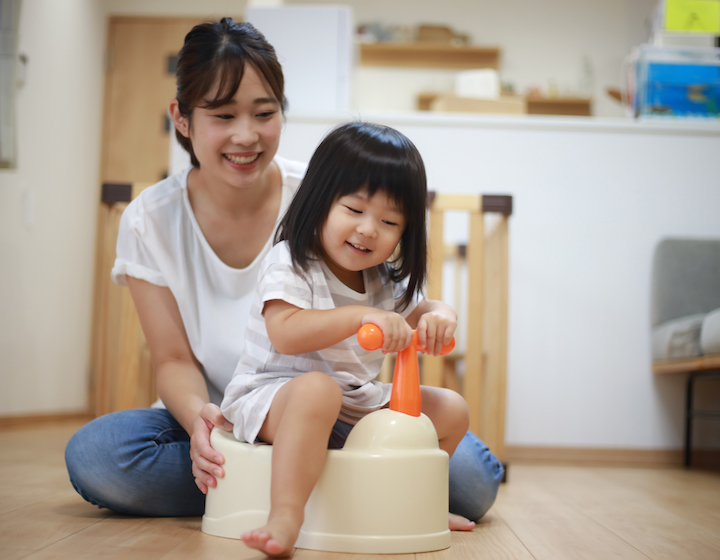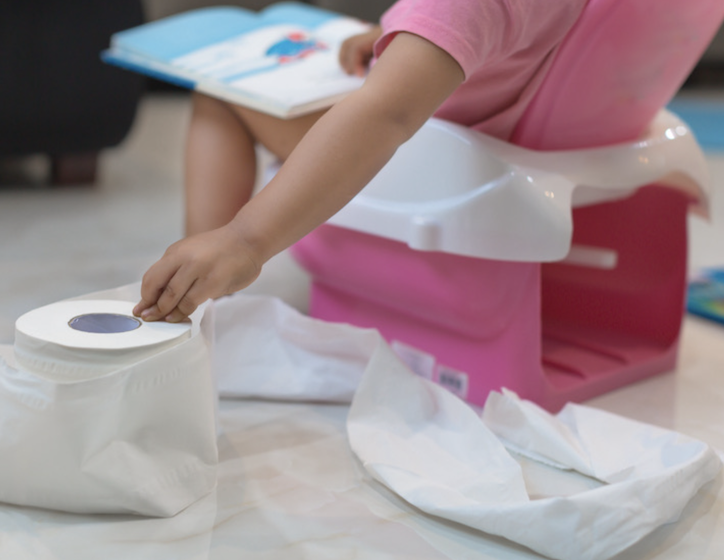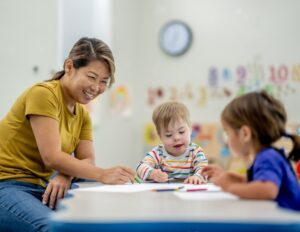
Mama and author of children’s book ‘The Great Singapore Poo Sale and Other Beastly Business’ shares her often hilarious parenting journey of teaching her kids the important life skill of using the toilet!
You’ve heard of the Slow Food Movement? I’m here to promote the Slow Poo Movement! Or Slow Bowel Movement? Anyway, forgive the potty humour, but I think it is appropriate for today’s topic. Ultimately, when and how to toilet train your child will depend on what works best for your family. I don’t intend to prescribe what to do, just to share my (ongoing) experiences and some resources that I hope you’ll find helpful.
Read More: Maureen Yeo on SG Wildlife & Why Our Education System is Churning Out Robots
I have a niece the same age as my older daughter, and she was potty-trained fast – over the course of a couple of weekends using methods similar to those detailed in these books:
![]() “Oh Crap! Potty Training: Everything Modern Parents Need to Know to Do It Once and Do It Right”
“Oh Crap! Potty Training: Everything Modern Parents Need to Know to Do It Once and Do It Right”
![]() “Toilet Training In Less Than A Day”
“Toilet Training In Less Than A Day”
Now three and a half years old, my niece has been rocking her panties and going accident-free for many months.
I, on the other hand, have been deliberately slow to transition my older daughter completely out of diapers. The main reason is that our family is always on the go, and I find having to stop everything for toilet breaks quite inconvenient. I also have a younger daughter just shy of 2 years old. I don’t particularly enjoy wrangling two toddlers in a public restroom where they insist on investigating the contents of the sanitary napkin bin with their bare hands and they find unrolling ALL the toilet paper to be the most hilarious thing in the world.
So yes, toilet training will have to be done eventually, but it’s probably best to take it easy on yourself and your child. I grew up with lots of dogs, and I realised that without any training at all, when puppies are biologically ready to control their sphincters, they’ll hold their business till they get to a grass patch. They do actually prefer not to soil themselves. I figured that it would be a natural process for children too.
Techniques to get kids started
Experts say typically developing children start to be aware of the sensation of needing to relieve themselves and become physically capable of controlling their urges when they are about 18 months old. So to be fair to your child, do not expect them to master toilet training before that age, though there is a technique you can use to get them started.
Read More: Signs of readiness for potty training
Monitor when in the day your baby tends to go to the toilet. If you discern a pattern, then simply sit your child down on the toilet bowl at the appropriate time and hold them securely. Then, make encouraging sounds. “Shee-shee” type noises for number 1 and grunting and moaning for number 2… I hope you know what I’m getting at!
You could also massage their tummies. At my prenatal class, they taught us the “I LOVE U” method which they said works even on grown-ups, and my husband still swears by it! You basically place gentle pressure along the colon to push out poo. First, draw an “I” with your hand by pressing down on the left side of your child’s tummy. Then, draw an upside down “L” – horizontal across the top of the tummy, then down the left side. Then, draw an upside down “U” – up the right side of the tummy, horizontal across the top of the tummy, then down the left side. Repeat as needed. Pay attention to which side of the tummy you’re performing the actions, because you don’t want to cause the poo to retract!
When your baby does the deed, celebrate like mad. This helps them understand from very early on that the toilet bowl is the right place to eliminate. If they are old enough to sit up on their own, about 9 months, you can get them to sit on a potty without you holding them. I used this method on my older daughter from about 3 months onwards, and for a long time she reliably had daily morning dumps. I would always congratulate myself on saving a diaper.
Kids learn from adults, and siblings learn from each other
That had to change when we had our second daughter. I could no longer give my oldest so much one-on-one attention, especially in the morning. However, by that time, she was demonstrating great readiness for toilet training. She had an immense curiosity about bodily functions, putting her face so dangerously close to her parents’ bums at our most private moments that she definitely got splashed a few times. The experts do say that this is an important part of toilet training. Being able to see grown-ups in extremis lets children know it’s all normal and not shameful.
What really surprised us was that our younger daughter seemed to be toilet-training alongside our older one! Just by watching and copying her sister, without much explicit instruction on our part, she got pretty capable at urinating and defecating in the potty and pouring the contents away into the toilet bowl afterwards, all by herself.
Some other signs to look out for which may indicate your child is ready:
– Able to take off and put on diapers/pants independently
– Able to indicate verbally or non-verbally when they have the urge to go or when they have soiled their diaper
– Can go for a few hours without wetting their diaper
If your child is older than 2 and is not quite there with the above signs, you may wish to consult a paediatrician. “How to Talk So Little Kids Will Listen” has a short section where one of the authors and some other parents share their experiences toilet-training their children with special needs. It can help to have a support group that can offer empathy and share best practices. Everyone is different, so whatever your circumstance, be kind to yourself and your child. Life is stressful enough without placing more undue pressure on ourselves.
Here’s a video I made recommending some books for potty training. Books are so helpful in creating an attitude of fun and a feeling of security around this potentially anxious transition.
I have found potty training to be great for building my kids’ confidence. Children are naturally enthusiastic about growing up and becoming more capable of doing things on their own. With every experience of success, they glow. And with every accident, there is an opportunity to learn resilience and try again. Of course, when you’ve got your Superhero Underwear on, you’re going to have adventures!
One thing that I did not expect was how toilet training would bring me closer to my daughters. I guess potty training comes at the same time as when children are developing a sense of privacy. “Only mummy and daddy can see me,” my older daughter will say when she’s on the loo. When we have our pants down, we really are at our most vulnerable. I feel blessed to be able to support my children through acquiring this life skill, and I don’t take it for granted, basic as it is.






 View All
View All





 View All
View All









 View All
View All





